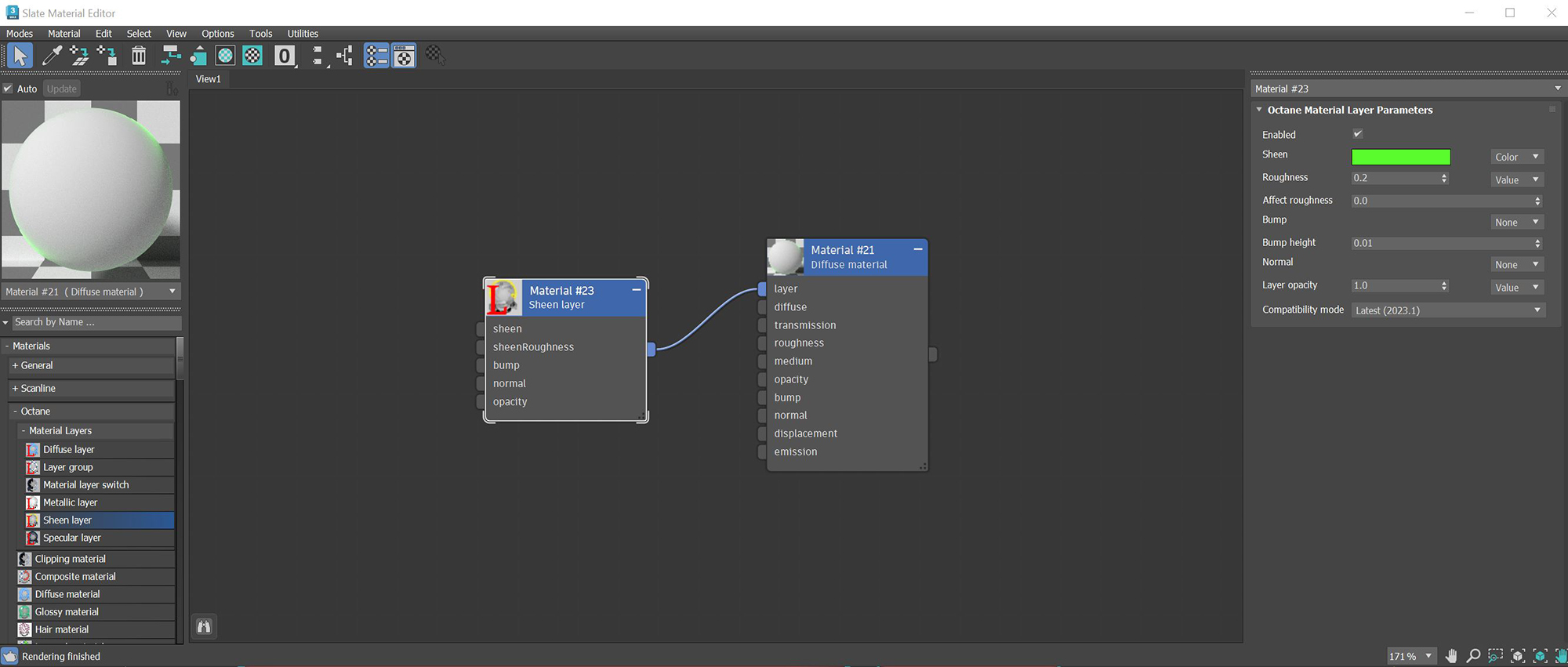Sheen Layer
The layered material system lets you construct complex materials that consist of a base layer and up to eight Material Layers. The layers are based on components used in previous Octane materials. Using this set of unique layers, OctaneRender® now lets you recreate complex materials in a physically-based manner, as opposed to manually mixing materials together.
The Sheen layer simulates the grazing coloration or rim lighting in fabrics like velvet. It can also simulate layers of dust.. Material Layers can connect to the Layered Material, Layer Group, Material Layer Switch, or a Material Layer pins on the standard Octane materials (Figure 1).
|
|
Sheen Layer
|
Figure 1: Sheen layer connected to the Layer pin on a Diffuse material
Sheen Layer Parameters
Enabled - Enables or disables this node in a material layer network.
Sheen - The Sheen layer's color.
Roughness - The Sheen layer's roughness. Higher values spread the sheen color to larger parts of the surface.
Affect roughness - Override the roughness value of the base material with the Sheen roughness value.
Bump - Simulates a relief by using a Greyscale texture interpreted as a Height map for the layer.
Bump Height - Determines the strength of the bump map. A value of 0 provides no bump height and negative values will invert the bump map.
Normal - Distorts Layer normals by using an RGB image.
Layer Opacity - Controls the Layer opacity with a Greyscale texture.
Compatibility Mode - The Octane version that the behavior of this node should match. The default is Latest (2023.1). The 2022.1 compatibility mode is the legacy behavior where Bump map strength is active but Bump Map Height is ignored.

